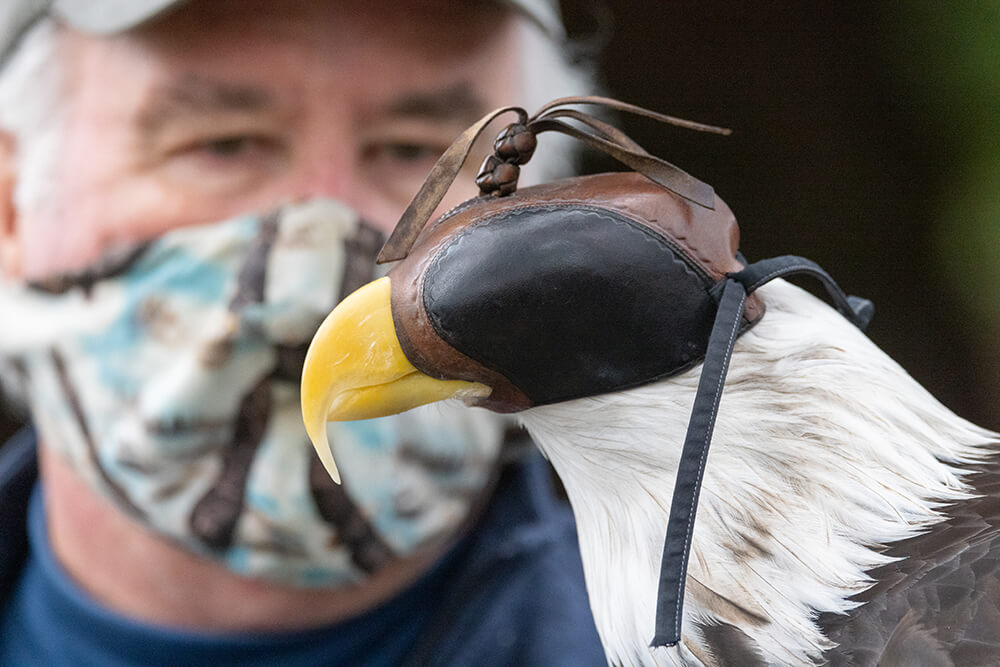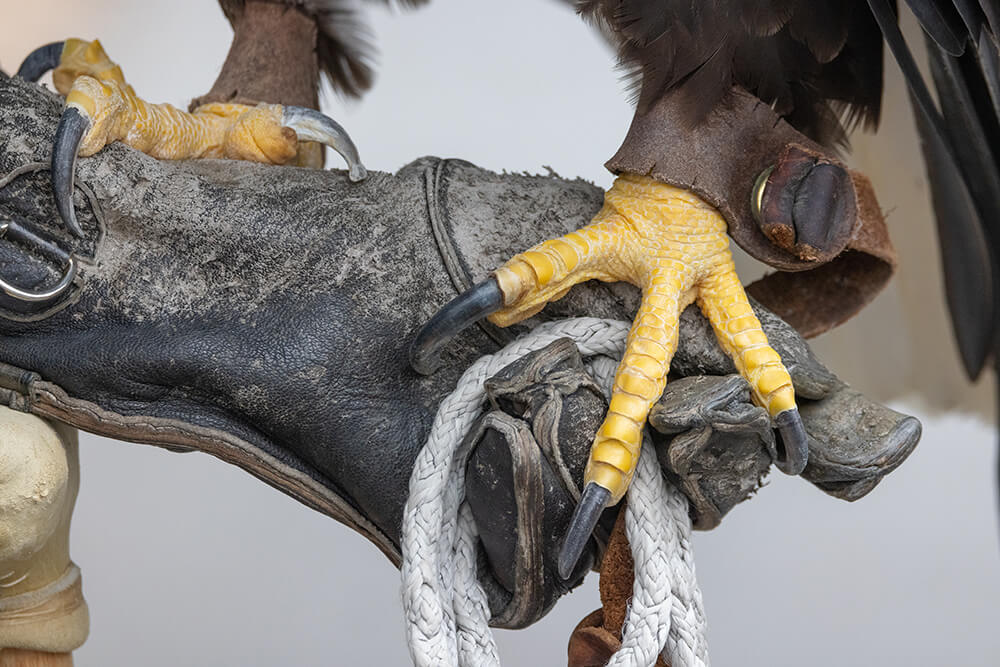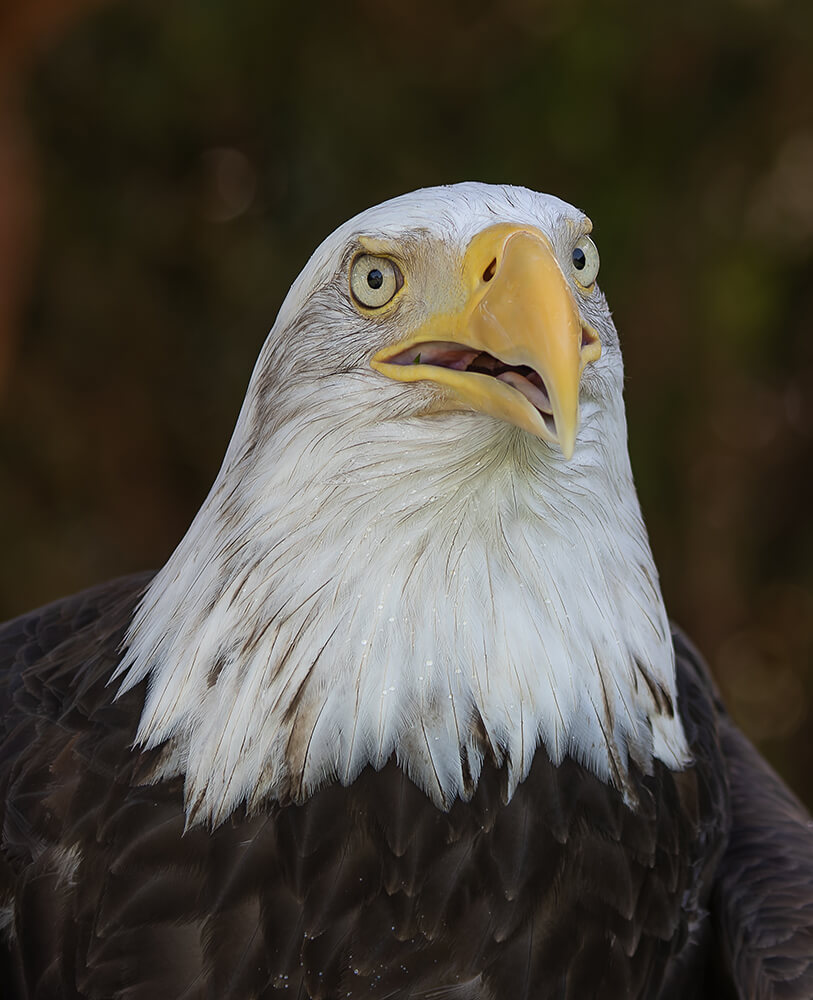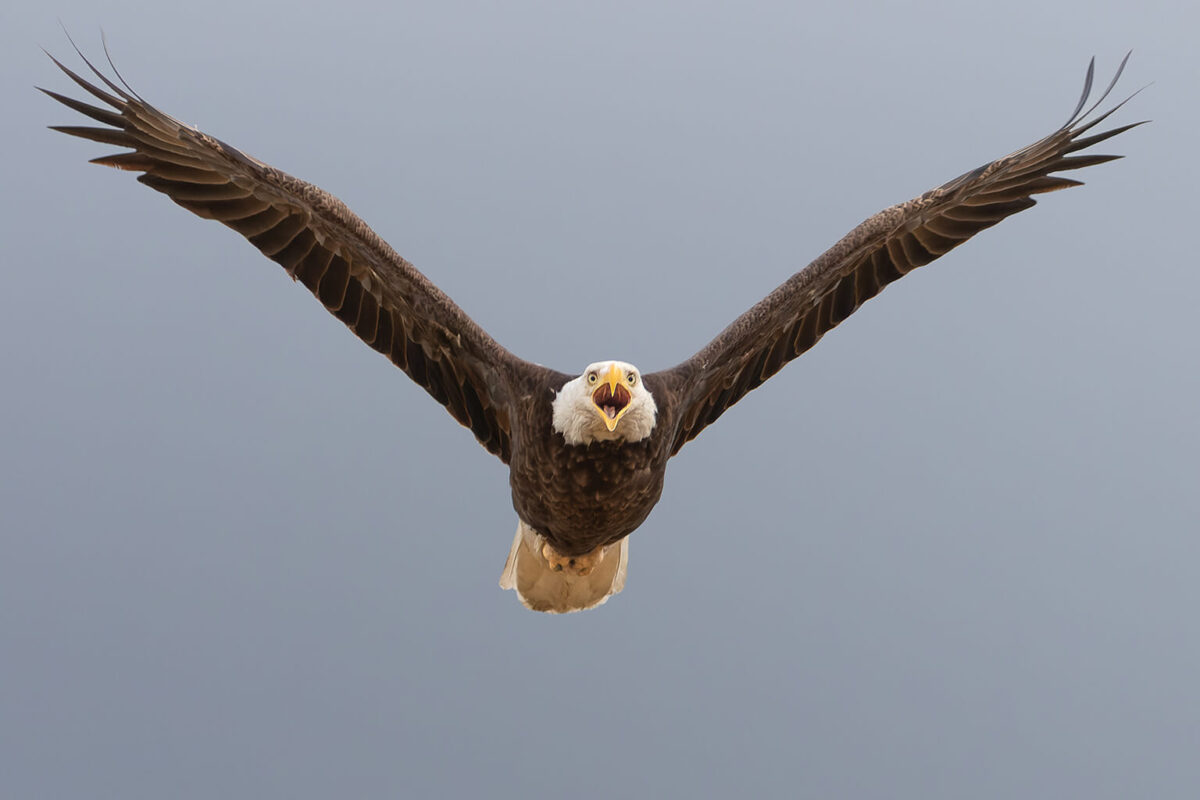Words and photos by Bob Siegel
Several years ago, I was at the Palo Alto Baylands hoping to encounter some interesting birds or other wildlife to photograph. As I approached the Lucy Evans Nature Center, there was clearly an event going on, so I walked over to check it out. My eyes fixated on an enormous bald eagle. This was my first encounter with Sequoia, an animal ambassador from the Palo Alto Zoo. The closer I got, the more entranced I became. I had seen and photographed bald eagles before, but never at such close range where the elegant details of its individual feathers and piercing gold eyes become apparent.
During the session, I was struck not only by Sequoia’s sheer beauty, but also by her impressive armamentarium of talons and beak. Additionally, I noticed her acute awareness of what was going on around her—particularly the presence of other raptors—even at great distances. Sequoia’s volunteer handler, John Flynn, welcomed my photography and answered all my questions. He patiently explained what safety distances were required and how Sequoia was to be approached.
Later that evening, I attended an event at the Foster Gallery. A tall man with a distinguished beard came up to me and said that we had met earlier that day. At first, I was a bit confused until he jogged my memory. It turns out I was so mesmerized by Sequoia that I had not taken sufficient notice of John.
John graciously offered to host my photography students for a close-up encounter with Sequoia. Since that time, he has met with many of my “Photographing Nature” classes. One of the most striking aspects I have observed is the relationship between John and Sequoia.

Sequoia is 35 years old—elderly for a bald eagle in captivity—and John has been with her all but two of those years. The record age for a bald eagle in captivity is 52. The pair appear to have a relationship of respect, trust and mutual understanding. This was not always the case. John describes an aggressive, young Sequoia as “hell on wheels.” In those days, John sustained three lacerations that required stitches and “tons of puncture wounds.”
But the partnership evolved into a highly-rewarding one, providing John with an avocation that he’s really passionate about. “She changed my life in so many ways,” he says, describing the connection as “enriching, interesting and challenging.” He even sees her feisty youth as a gift, recounting times of tranquility when he would just sit with her and look out at the ocean. Sequoia also helped John get over his aversion to public speaking, and he now fully embraces sharing his knowledge and enthusiasm.
The pervasive use of the pesticide DDT led to a precipitous decline in the bald eagle population until it was banned in 1972. John credits dedicated breeding programs with aiding in the species’ recovery. Originally hatched on Swanson Island in the Queen Charlotte Strait in British Columbia, Sequoia was about six weeks of age when she was transferred to Ventana, Big Sur, by the Ventana Wildlife Society. The goal was to “translocate bald eagles from Canada where the population was healthy to areas in the Lower 48 where populations were in severe decline.”

Sequoia was subsequently released to the wild, but tragedy struck when she was shot, resulting in permanent paralysis of her tail. Found by a rancher in Humboldt County, she was identified and saved by a local vet before getting transferred back to Ventana. As John describes it, Sequoia has “no brakes and no rudders” and does not fly well in the wild. She would have difficulty catching fish or hunting. She also cannot mate because of her inability to move her tail.
Subsequently, Sequoia transferred to the San Francisco Zoo, where she spent 22 years as an ambassador for the bald eagle breeding program under the direction of John Aikin. When Aikin became the executive director of the Palo Alto Children’s Zoo and Museum, Sequoia moved to the Peninsula. John Flynn began working with Sequoia in San Francisco and continued in Palo Alto, where Sequoia has resided for the past 11 years.
Sequoia weighs 11.5 pounds. This seems light for a creature of her size until you realize that she is mostly feathers and muscles with hollow bones. During an ambassador session, Sequoia sits perched on John’s outstretched arm for extended periods in a way that is physically quite challenging. He is often assisted at times by a fixed perch and by Dennis Eve, who has also been working with Sequoia for the past five years.
Thanks to the level of trust between them, John is able to demonstrate Sequoia with full wing extension, with her protective, nictitating eyelid closed and her mouth open. He also makes use of a water sprayer, which Sequoia seems to enjoy and helps keep her cool. Occasionally, Sequoia will rub her face on John’s arm. This looks like an act of affection, but John assures me, she is using him to help preen.

Bald eagles are members of the Accipitridae family, which includes hawks, eagles and kites. Their specific name, leucocephalus, aptly means “white head.” But unlike vultures, bald eagles are not bald. The “bald” part of their common name seems to be etymologically linked to a word meaning “white” as in piebald. Another common misconception about bald eagles has to do with their vocalizations. In popular media such as The Colbert Report, the imagery of a bald eagle is often paired with the imposing and iconic call of a red-tailed hawk. The actual call of a bald eagle is far less threatening.
You can meet Sequoia and John by visiting the Palo Alto Junior Museum and Zoo. Although Sequoia is not on public display, she does a series of meet-and-greet sessions on Wednesday, Saturday and Sunday at noon. John is more than happy to answer all your eagle questions.


